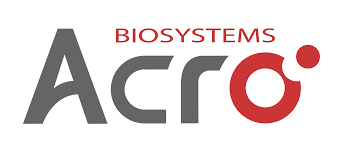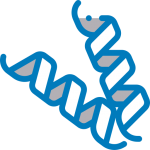
 Mouse VEGF R2 / KDR Protein, Mouse IgG2a Fc Tag, low endotoxin
Mouse VEGF R2 / KDR Protein, Mouse IgG2a Fc Tag, low endotoxin
VE2-M5258
1mg
Brand
ACROBiosystems
Description
Source :
Mouse VEGF R2, Mouse IgG2a Fc Tag, low endotoxin (VE2-M5258) is expressed from human 293 cells (HEK293). It contains AA Ala 20 – Glu 762 (Accession # P35918-1).
Molecule : VEGF R2
Synonyms : KDR,CD309,FLK1,VEGFR,VEGFR2
Format : Powder
Category : Bio-Markers & CD Antigens
Accession : NP 034742.2
Storage : -20℃
Shipping condition : Powder,RT
Molecular Weight : 110.1 kDa
Characteristics :
This protein carries a mouse IgG2a Fc tag at the C-terminus. The protein has a calculated MW of 110.1 kDa. The protein migrates as 120-135 kDa under reducing (R) condition (SDS-PAGE) due to glycosylation.
Endotoxin Level : Less than 0.1 EU per μg by the LAL method.
Buffer : 50 mM Tris, 100 mM Glycine, pH7.5
Description :
Kinase insert domain receptor (KDR) is also known as CD309, FLK1, VEGFR, VEGFR2, and is one of the subtypes of VEGFR. VEGF receptors are receptors for vascular endothelial growth factor (VEGF). There are three main subtypes of VEGFR, numbered 1, 2 and 3. The VEGF receptors have an extracellular portion consisting of 7 immunoglobulin-like domains, a single transmembrane spanning region and an intracellular portion containing a split tyrosine-kinase domain. VEGF-A binds to VEGFR-1 (Flt-1) and VEGFR-2 (KDR/Flk-1). VEGFR-2 appears to mediate almost all of the known cellular responses to VEGF.The function of VEGFR-1 is less well defined, although it is thought to modulate VEGFR-2 signaling. Another function of VEGFR-1 may be to act as a dummy/decoy receptor, sequestering VEGF from VEGFR-2 binding (this appears to be particularly important during vasculogenesis in the embryo). In addition, VEGFR2 is able to interact with HIV-1 extracellular Tat protein upon VEGF activation, and seems to enhance angiogenesis in Kaposi’s sarcoma lesions.
References :
(1) Holmes K,et al., 2007, Cell Signal. 19 (10): 2003–2012.
(2) Stuttfeld E, et al., 2009, IUBMB Life 61 (9): 915–22.
(3) Fujita, N, et al., 2008, Biochemical and biophysical research communications 372 (2): 367–372.
Application
Reactivity



